Using A Stern-tie – A skill for your seamanship toolbox
20th July 2021
The coastal waters of British Columbia boast more nooks and crannies to explore than you could possibly visit in a lifetime. These anchorages are often narrow, deep, and subject to large tidal changes. Many have a limited amount of area available for swinging on the hook and a stern tie becomes your best friend.
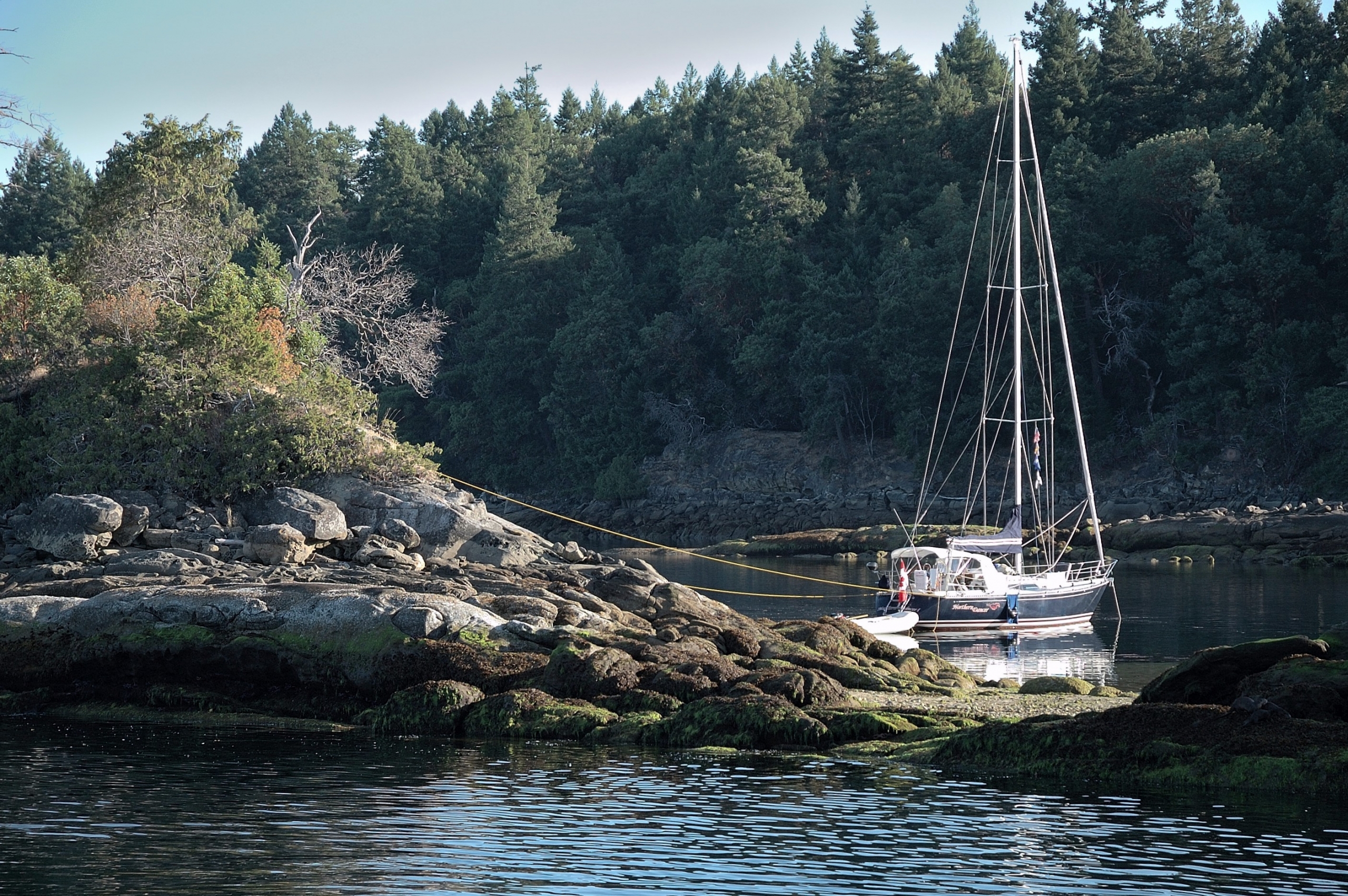
British Columbia abound in nooks and crannies to explore, with the aid of a stern-tie
Stern-tying, also known as “shore tie.” is a common practice for anchoring in popular marine parks and tight anchorages. A line is ran from the stern of an anchored boat to the shore to prevent swinging while at anchor. It’s common courtesy and etiquette to eliminate the need for swinging in popular anchorages to leave room for others to enjoy. It also a safety precaution that keeps boats from swinging into each other.
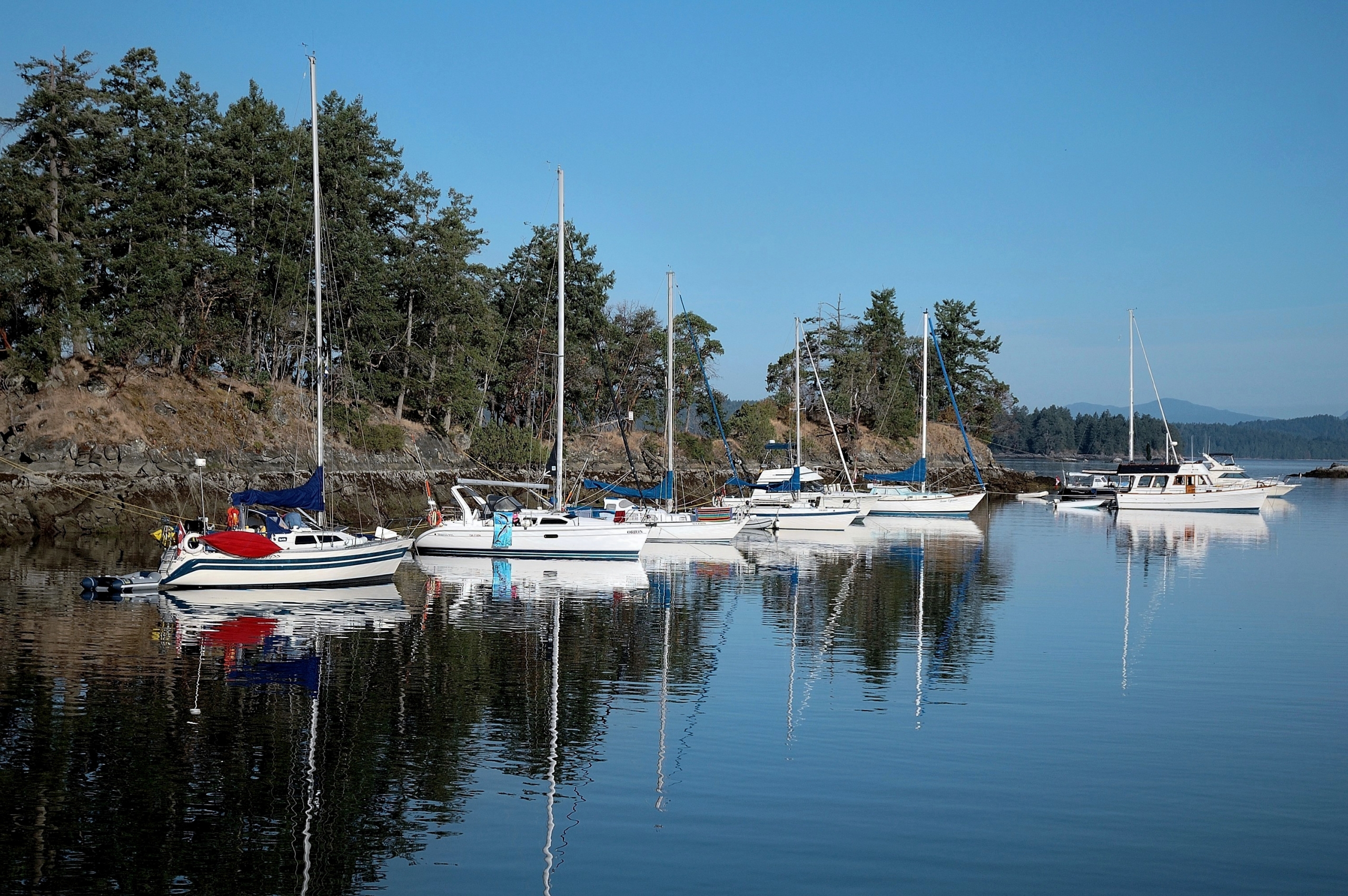
Stern-tying is a common practice in popular marine parks.
Another use for a stern-tie is for anchoring at the edge of deep water or over a steeply-sloping bottom. You don’t want to pull the anchor towards the deeper water, where it would diminish the scope and holding. The stern-tie keeps the tension on the anchor towards shallower water, reducing the chance of pulling anchor.
You can also use a stern-tie to prevent current from turning the boat broadside to the wind. This can be an extremely uncomfortable situation unless you square up to the incoming waves.
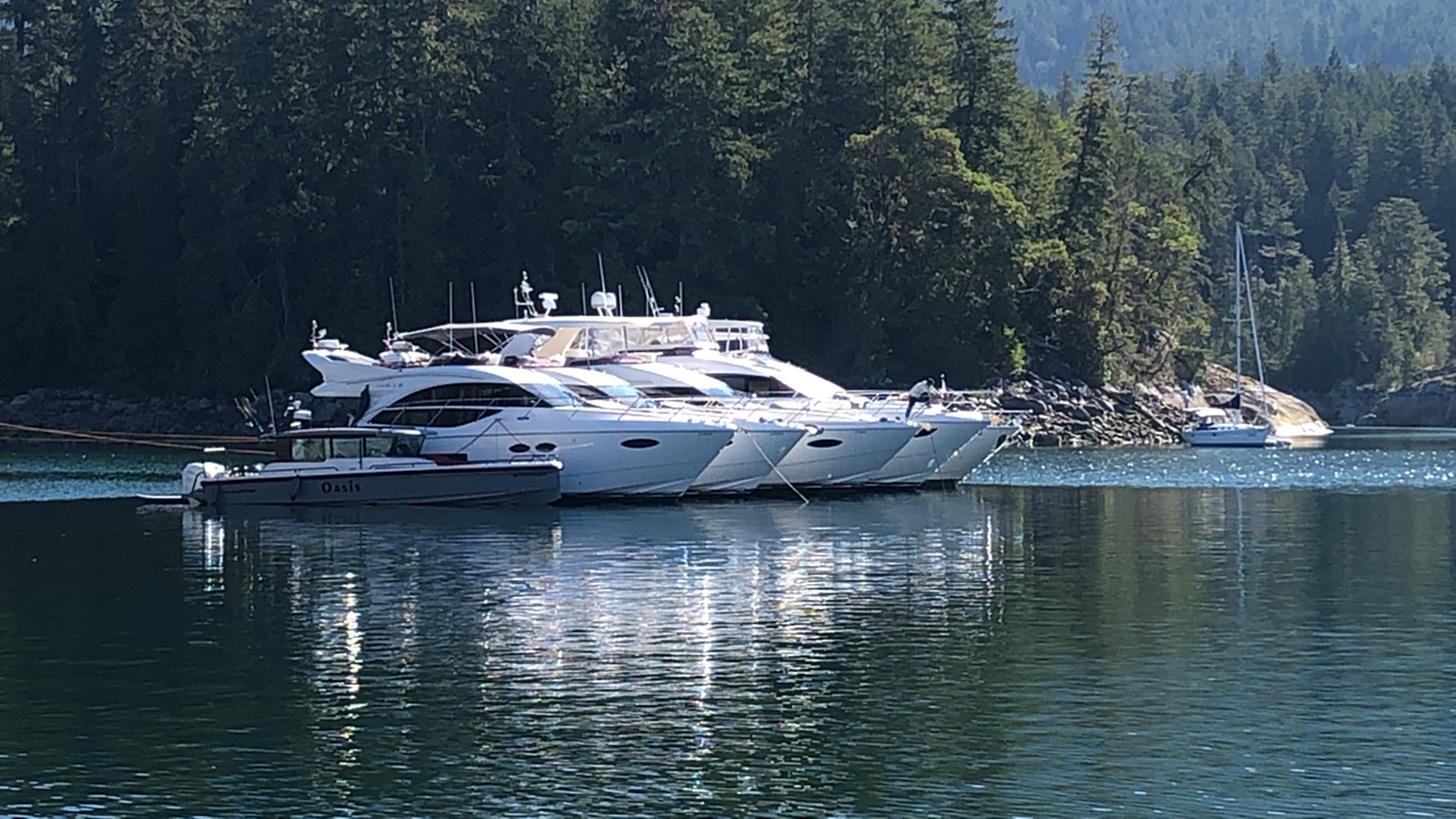
A stern-line will provide additional anchoring opportunities
The most commonly carried stern line for a boat up to 50-feet is 200-300 feet of half inch polypropylene or flat polyester webbing. Polypropylene is the preferred line because it floats, its bright yellow color is highly visible, and it’s inexpensive. A floating line is less likely to get fouled in the propeller of your tender or yacht. If the line doesn’t float it will be more difficult to row to shore due to the drag created.
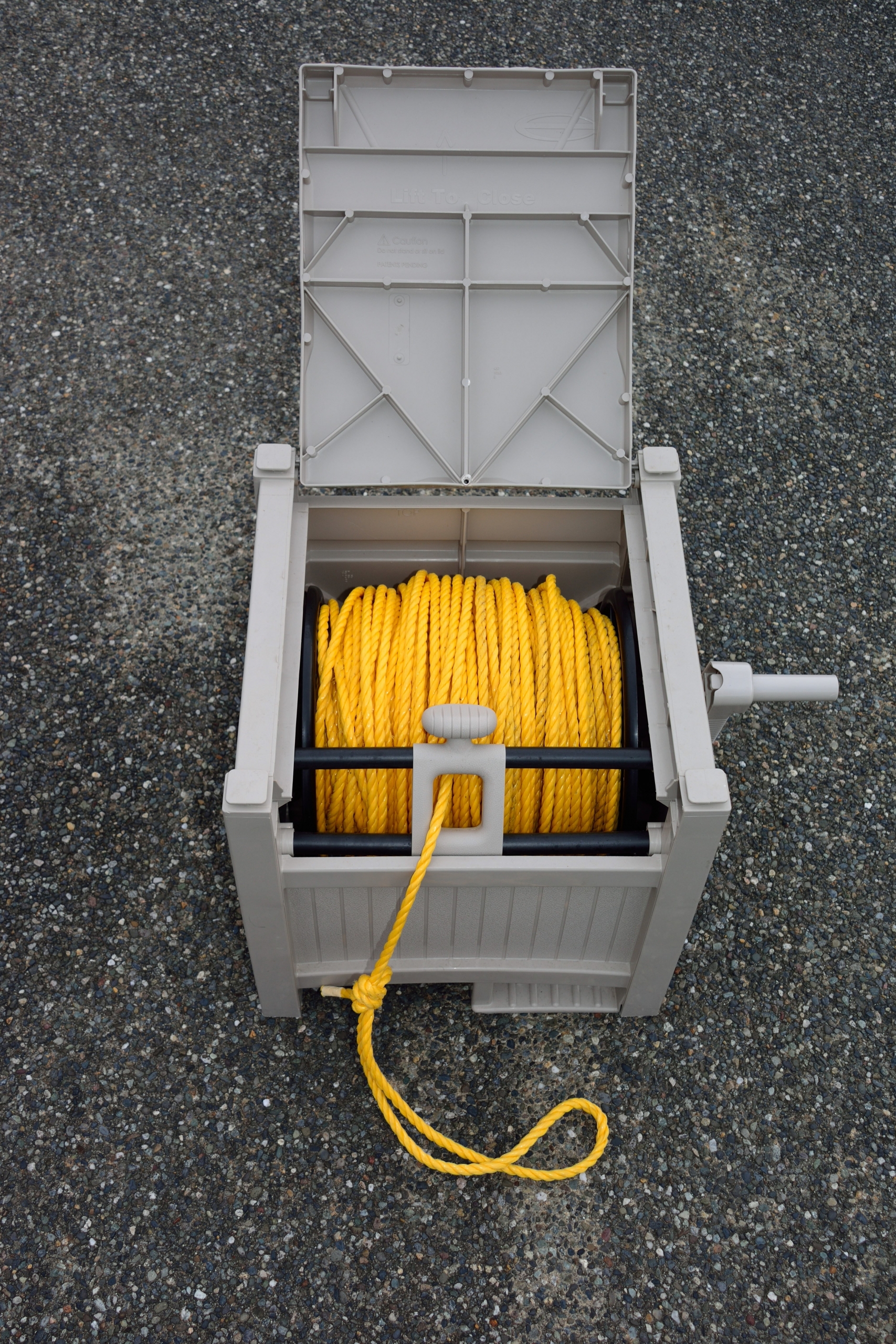
600-feet of Polypropylene on Garden hose reel doubles as small bridge table
The process of stern-tying is best done with two people. It begins with one at the helm and the other out on the bow. Set the anchor at the desired depth off-shore from the chosen resting place. Once the anchor is set, back the boat into the predetermined resting spot. While the individual at the helm holds the boat in position, the second person takes the bitter end of the stern-line ashore with the dinghy.
Once ashore, pass the line around a secure object such as a tree or fallen tree. Then pull enough line around the object to get back to the boat. This is easier than trying to pull line around the object while rowing. Back onboard, tied the bitter-end of the line to a stern cleat. Then pulled the other end of the line taut, leaving enough slack to compensate for the rise and fall of the tide, and secured it to the opposite side stern cleat.
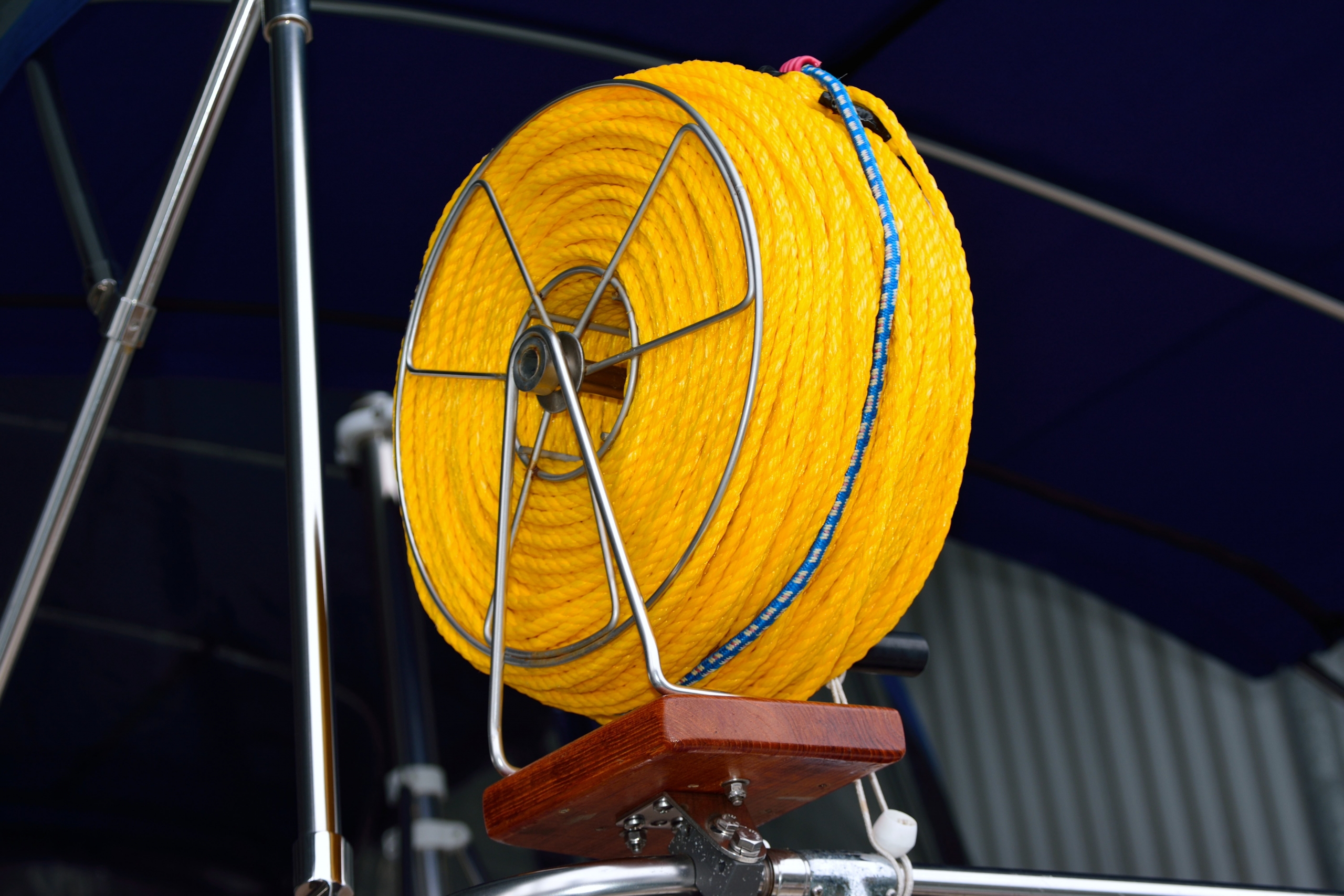
Stern-tie storage take all forms
Your rode length should have been set at the maximum possible when you first anchored so that if you need to move the boat back out by taking-up rode you while still have plenty of scope should the wind kick-up. When it’s time to depart, simply release the line from the cleats and pull it back onboard the boat.
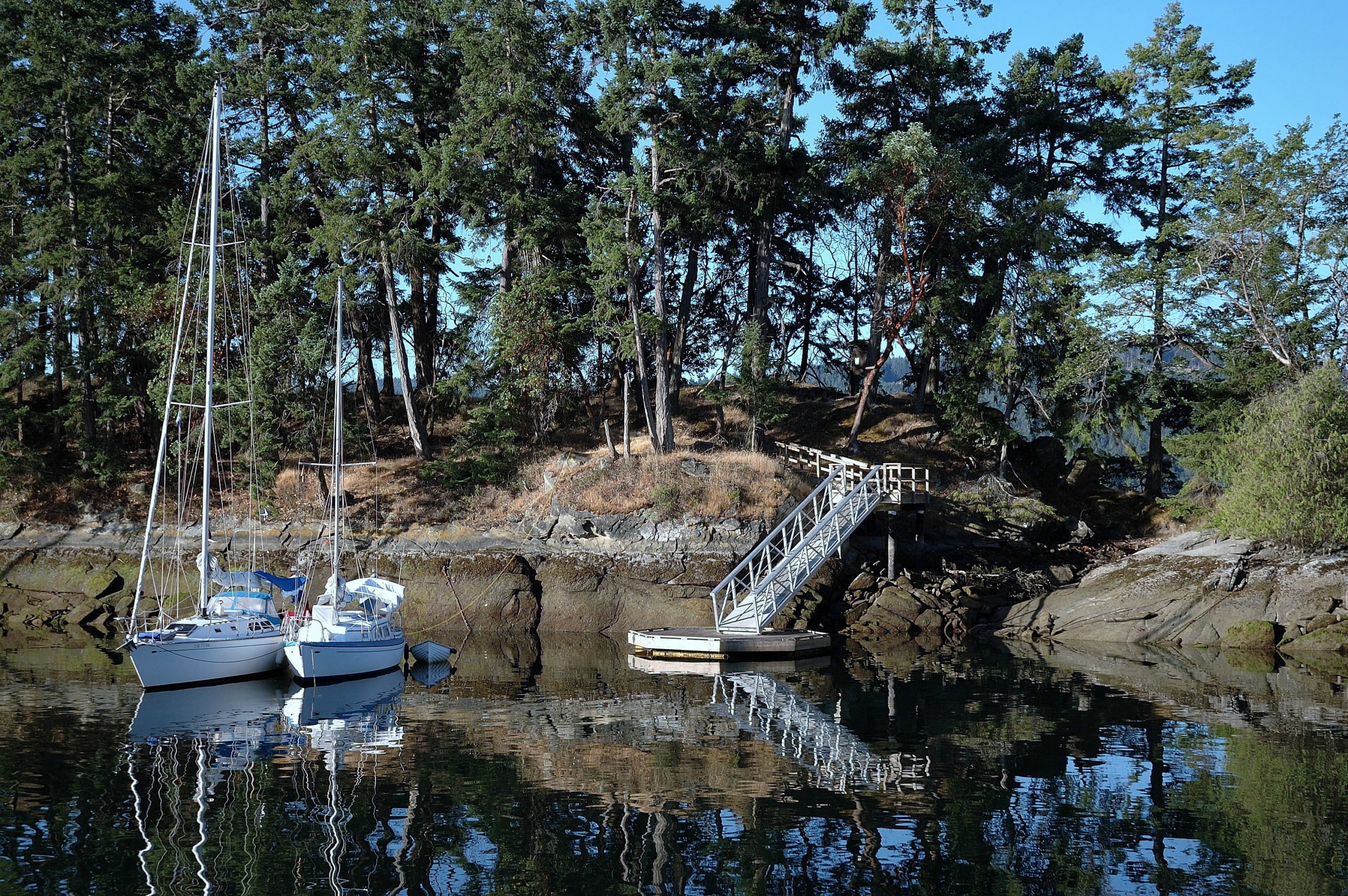
Many B.C. marine parks, metal rings or chains anchored into the rock shoreline offer secure spot to stern-tie
Adding a stern-line to your vessel will provide greater opportunities to enjoy the anchorages of the coast.
(Deane Hislop in partnership with Freedom Marine)


